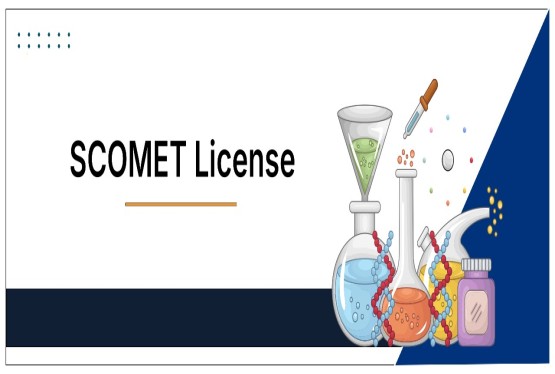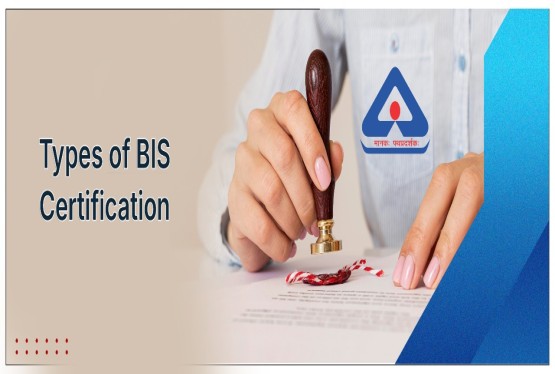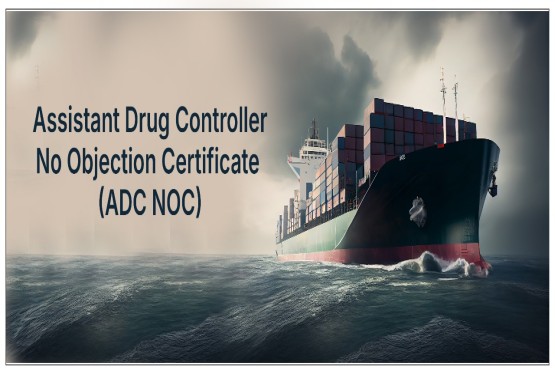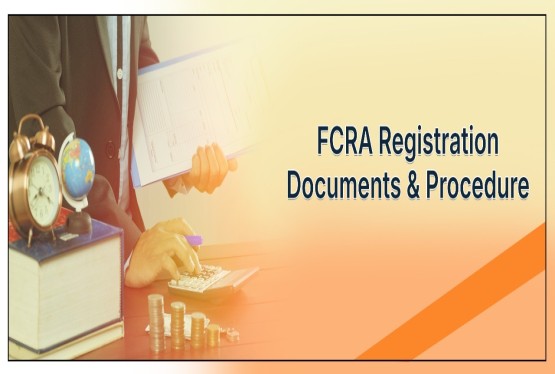Setting up a non-profit organization in India often involves registering as a Section 8 Company under the Companies Act, 2013. A Section 8 Company is specifically designed for promoting charitable objectives such as education, social welfare, art, culture, religion, and environmental protection. Unlike regular companies, Section 8 entities must reinvest any profits back into their mission rather than distributing them to members. The documents and process for Section 8 Company registration is for a smooth and successful setup.
The registration process requires thorough preparation, including gathering essential documents like identity proofs, address proofs, and financial statements, as well as following a multi-step procedure involving approvals from the Registrar of Companies (RoC). With the right documentation and a clear roadmap, organizations can ensure full legal compliance while gaining credibility, tax benefits, and government recognition. This guide provides a detailed overview of everything you need to get started.
Section 8 Company
A Section 8 Company in India is a non-profit organization formed under the Companies Act, 2013, with the primary goal of promoting charitable activities like education, art, science, social welfare, and environmental protection. Unlike other companies, Section 8 Companies do not distribute profits to their members; instead, all earnings are reinvested to advance their objectives. They enjoy various tax exemptions, legal credibility, and government support, making them an ideal structure for organizations dedicated to social impact and development.
Why Choose a Section 8 Company?
Choosing a Section 8 Company is a good option for anyone who wants to run a non-profit organization legally and professionally. It offers benefits like tax exemptions, better credibility, and easier access to grants and donations. Section 8 Companies are trusted by government bodies, donors, and the public because they are carefully regulated. They also have a proper management structure with a board of directors, which helps in running operations smoothly and transparently, making them a popular choice for social work.
Key Features of Section 8 Companies
Section 8 Companies stand out because they are built for social, charitable, and non-profit purposes. Here are the main features:
-
Non-Profit Objective: The company must work towards promoting charity, education, art, science, sports, or similar activities without any profit motive.
-
No Dividend Distribution: Any profits earned must be used only for promoting the company’s main objectives. Members cannot receive dividends.
-
Legal Recognition: Section 8 Companies are registered under the Companies Act, 2013, giving them strong legal standing.
-
Tax Benefits: They can enjoy exemptions under the Income Tax Act if they meet certain conditions.
-
Limited Liability: Members’ liability is limited to the amount they agree to contribute to the company.
-
Governed by Board of Directors: A structured and professional governance system ensures transparency and accountability.
-
No Minimum Capital Requirement: There’s no mandatory minimum capital to start a Section 8 Company.
-
Higher Credibility: Compared to trusts and societies, they often enjoy greater trust among donors, funders, and government agencies.
Documents Required for Section 8 Company Registration
1. Director’s Identification Documents
For registering a Section 8 Company, each proposed director must submit proper identification documents. These are necessary to verify their identity and ensure compliance with legal requirements. Here’s what is needed:
-
PAN Card: Mandatory for all Indian directors as primary identity proof.
-
Passport: Required for foreign directors and useful as additional proof for Indian nationals if available.
-
Aadhaar Card: Acts as a government-issued identity and address proof.
-
Voter ID or Driving License: Additional identity documents to strengthen the verification process.
-
Passport-size Photograph: Recent, colored, and clear photo of each director.
-
Digital Signature Certificate (DSC): Necessary for electronically signing registration forms and documents.
-
Director Identification Number (DIN): Applied along with the incorporation or updated if already available.
Ensuring that all these documents are current, clear, and properly certified will help avoid any delays during the registration process.
2. Registered Office Address Proof
Every Section 8 Company must declare a registered office address during the incorporation process. This office will serve as the company’s official communication address. Here are the documents needed:
-
Recent Utility Bill: Electricity bill, water bill, or gas bill (not older than 2 months). Must clearly show the property’s full address and the owner’s name
-
Rent Agreement (if the property is rented): A legally valid rental or lease agreement between the landlord and the company. Must clearly mention the rental terms and the address of the property
-
No Objection Certificate (NOC) from the Owner: A simple letter from the property owner giving permission to use the premises as the registered office. Should mention the owner’s consent along with the property address
Having complete and accurate address proof ensures that there are no issues with the Registrar of Companies (RoC) during verification.
3. Company’s Financial and Strategic Documents
While registering a Section 8 Company, it's important to present certain financial and strategic documents that reflect the company’s intent, stability, and future plan. These documents show the Registrar that the company is well-prepared and aligned with its charitable objectives.
-
Projected Income and Expenditure Statement: A financial forecast showing expected income and planned expenses for at least the next three years. Should highlight how the funds will be used to achieve the company’s objectives.
-
Statement of Assets and Liabilities: A basic declaration of the initial financial standing of the company. If any assets are already available (like computers, office space, etc.), they should be mentioned.
-
Brief Description of Proposed Activities: A detailed note explaining the type of charitable, educational, social, or environmental activities the company plans to undertake. Must be aligned with the objectives stated in the Memorandum of Association (MOA).
-
Financial Sources Plan: A simple plan or note explaining how the company plans to raise funds (donations, grants, crowdfunding, sponsorships, etc.). Shows the financial sustainability of the project.
Presenting these documents correctly not only speeds up the approval process but also builds trust with regulatory bodies and future donors.
4. Additional Compliance Documents
Besides identity, address, and financial documents, Section 8 Company registration requires a few extra compliance documents. These ensure that the company and its promoters agree to follow the law and operate responsibly. Here’s what’s needed:
-
Director’s Consent to Act as Director (Form DIR-2): A signed declaration from each director stating that they agree to serve on the board. Must be dated and include personal identification details.
-
Declaration of Compliance (Form INC-14): A legal declaration filed by a practicing Chartered Accountant (CA), Company Secretary (CS), or Advocate. It confirms that all registration requirements under the Companies Act, 2013, have been complied with.
-
Affidavit for Non-Acceptance of Deposits: Directors must declare that the company will not accept deposits from the public, ensuring the non-profit character of the organization.
-
INC-15 Declaration: A declaration by each applicant confirming they are subscribing to the company’s Memorandum and Articles of Association.
Completing these compliance documents properly ensures a smooth and legally sound Section 8 Company registration process.
Process for Section 8 Company Registration
Registering a Section 8 Company involves a structured process, ensuring the organization meets all legal and regulatory requirements are:
1. Registration on the MCA Portal
To register a Section 8 Company, create an account on the MCA portal, log in, and fill out the SPICe+ form. Upload required documents, pay the necessary fees, and track your application using the Service Request Number (SRN). Successful submission leads to the issuance of the incorporation certificate.
2. Fill Part-A of the SPICe+ Form
In Part-A of the SPICe+ form, you reserve your Section 8 Company’s name by proposing two suitable names and briefly describing the company’s objectives. After checking availability and submitting the form, the Registrar will approve the name, allowing you to move forward with the incorporation process in Part-B.
3. Fill Part-B of the SPICe+ Form
Part-B of the SPICe+ form involves completing the full incorporation details. You must provide information about directors, subscribers, registered office address, share capital, and attach required documents. It also covers applications for PAN, TAN, and other registrations. After filling Part-B, you can submit the form for final company incorporation.
4. Filling other Relevant Form (SPICe-AOA, SPICe-MOA, AGILE-PRO)
Along with SPICe+, you must fill SPICe-MOA (Memorandum of Association) and SPICe-AOA (Articles of Association) digitally. AGILE-PRO is used to apply for GST registration, EPFO, ESIC, bank account, and professional tax. These forms ensure the complete legal setup of the Section 8 Company during the incorporation process.
5. Uploads the documents of final submission
After filling all forms, upload the required documents like identity proofs, address proofs, MOA, AOA, declarations, and NOC on the MCA portal. Ensure each document is digitally signed using a valid DSC. Once uploaded, verify everything carefully before final submission to avoid rejection or delays in the registration process.
6. Post Incorporation Compliance
After the registration of a Section 8 Company, certain post-incorporation compliances must be completed to maintain legal status. First, a company bank account must be opened, and a statutory auditor must be appointed within 30 days. Share certificates should be issued to subscribers within 60 days, and all statutory registers must be properly maintained. The company should also apply for 12A and 80G certifications to avail income tax exemptions and donor benefits. Regular board meetings must be conducted, with the first meeting held within 30 days of incorporation. Filing annual returns and financial statements with the Registrar of Companies (ROC) is mandatory, along with maintaining updated and accurate books of accounts. Following these compliances ensures the Section 8 Company remains legally compliant, financially transparent, and eligible for various government and tax benefits.
Conclusion
Registering a Section 8 Company is a simple way to give your charitable or non-profit activities a legal structure. The process mainly involves collecting the right documents, filling out forms correctly, and submitting everything through the MCA portal. Paying close attention to details like director IDs, office proof, and financial plans can help avoid delays. After getting the registration certificate, it’s important to follow all legal rules, such as maintaining proper records, filing returns, and holding regular meetings. A Section 8 Company offers several benefits like tax advantages, government recognition, and better trust from donors and the public. By carefully following the documents and process required, anyone can set up a Section 8 Company and start making a positive impact on society in a professional and organized way.
If you have any queries regarding Section 8 Company Registration, then you can connect with Compliance Calendar LLP experts through email info@ccoffice.in or Call/Whatsapp at +91 9988424211.
FAQs
Q1. What is the process of registering a Section 8 company?
Ans. To register a Section 8 Company, obtain Digital Signatures (DSC) and Director Identification Numbers (DIN), reserve the company name through the MCA portal, file SPICe+ forms, draft MOA and AOA, apply for a license under Section 8, submit all required documents, and receive the Certificate of Incorporation.
Q2. How can I form a Section 8 company?
Ans. Obtain DSC and DIN, reserve your company name, draft MOA and AOA, file incorporation forms on the MCA portal, get a Section 8 license, and receive the incorporation certificate.
Q3. What is the cost of registering a Section 8 company in India?
Ans. Registering a Section 8 Company in India usually costs between ?8,000 to ?25,000, depending on professional fees, Digital Signature Certificates, stamp duty, and other charges. Government fees are concessional to encourage non-profit company formation.
Q4. What are the requirements of section 8 company?
Ans. A Section 8 Company requires a charitable objective, at least two directors, identity and address proofs, a registered office, and compliance with the Companies Act, 2013. Profits must support the objectives, without any distribution to members.
Q5. What is the checklist for Section 8 company incorporation?
Ans. Minimum two directors, obtain DSC and DIN, reserve company name, draft MOA and AOA, file SPICe+ and related forms, apply for Section 8 license, submit documents, pay fees, and receive the incorporation certificate.












































































_crop10_thumb.jpg)







_Rules,_2025_learn_crop10_thumb.jpg)
























































































_crop10_thumb.jpg)








 in BIS FMCS_learn_crop10_thumb.jpg)









_crop10_thumb.jpg)





